

Pittsburgh
1966-67 Panthers
(Authentic Reproduction)
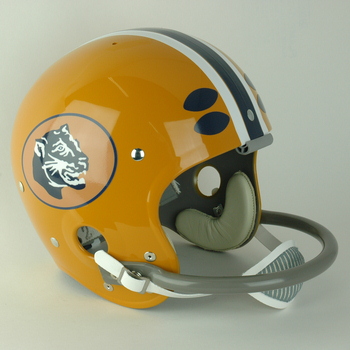
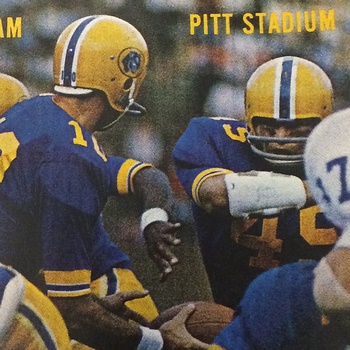
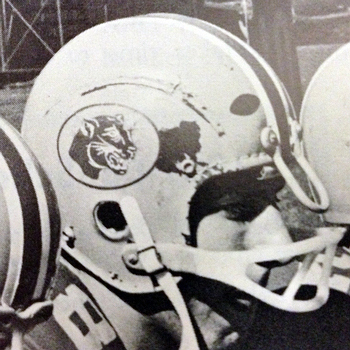
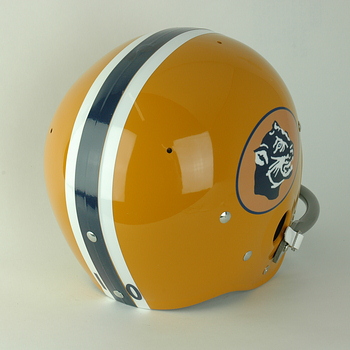

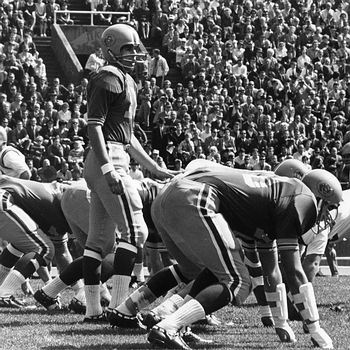
If "The Michelosen Era" at Pitt, an eleven year period that provided a solid cast of players, model citizens in the classroom, and a tough, competitive squad schooled in fundamentals almost every year, was scorned by supporters toward the end of its run as being "old fashioned", then the three years of Dave Hart's stewardship was viewed as the nadir of Pitt football in the modern age. Three successive 1-9 seasons made alumni and fans clamor for the conservative yet competitive ways of John Michelosen. Hart was neither incompetent nor surrounded by fools. His pedigree included flying thirty missions in the European Theater as a U.S. Air Force pilot, an impressive playing career at Pennsylvania’s St. Vincent College, and a solid resume as the ultra-successful head coach at Johnstown and Mount Pleasant (PA) High Schools. He was a respected assistant while at Kentucky and Navy before arriving at Pitt. His staff included future head coaches Leeman Bennett (Atlanta Falcons and Tampa Bay Bucs), Frank Cignetti (West Virginia), Dick Bestwick (Marshall and Virginia), Bill Neal (Indiana University Of Pennsylvania), and Bill Lewis (Wyoming, East Carolina, and Georgia Tech). Assistant Jim Royer became Director Of Player Personnel for the NY Jets. Thus, it wasn’t a lack of coaching acumen that crippled the Panthers but a de-emphasis of the program with reductions in funding complicated by a continuation of their always difficult schedule. Quarterback Dave Havern summed up the Pitt situation years later by stating, “It was like the Viet Nam War. They sent us in and they didn’t follow up on the commitment. They just left us out there. If they had only given those guys half the commitment they gave Johnny Majors.” Hart inherited a large but slow squad lacking in depth and he could not stop the slide. Upon initially evaluating his new squad, Hart was clear that “We lack everything you need to be a major college team, except for three ingredients. Pride, enthusiasm, and desire. That’s all we have to go on.” 1966 was the first of the 1-9 seasons and similar to the situation in '65, many players were forced to go both ways. Team captain Jim Flanigan was the new I-Formation fullback and the key linebacker on defense, the latter position one he would fill for the Packers from ’67 through ’70 and with the Saints in 1971. His son Jim would star at Notre Dame and play linebacker in the NFL for nine years, primarily with the Bears. Tom Metrakos again flipped between center and linebacker and tight end Bob Longo was one of the few consistently good performers. For those interested in weight training trivia, defensive tackle Greg Ellis was a solid performer and later opened the very first all-Nautilus training facility in the Pittsburgh area. The defense was terrible, yielding 326 points while the offense put up two or more scores only twice. Not unusual for a new head coach, Hart introduced a new uniform design that included a Sunflower gold helmet with a one-inch navy blue center stripe and one-half-inch white flanking stripes. With one-inch navy blue player identification numerals placed upon the white stripes at the rear of the shell, Hart added the distinguishing oval decal on each side, displaying a navy blue and white panther head with a blue outline. For those Pitt players who turned in what the staff deemed to be outstanding plays, a Navy blue, football shaped award sticker was placed upon the helmets after each game.
With a repeat of the 1966 record, the 1-9 of 1967 displayed even less offense, scoring more than thirteen points only once in ten outings. Giving up 58 points against Miami and in excess of thirty in four other games made the problems apparent. Playing a lot of sophomores that his staff had recruited, Coach Hart’s squad never got off the ground. Quarterback was in chaos with Frank Gustine taking over part way through the season, and promising tailback Denny Ferris, a 4.4/40 sprinter missed the entire season after a summer construction job accident imbedded a splinter of concrete in his eye. Greg Keller, who was moved from defensive end to noseguard, was the only solid defensive performer.
If interested in any of these Pittsburgh helmets please click on the photos below.